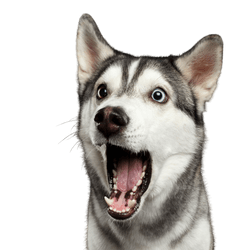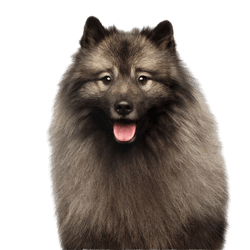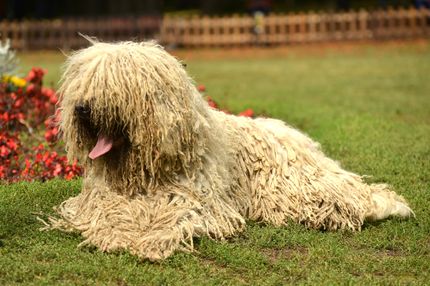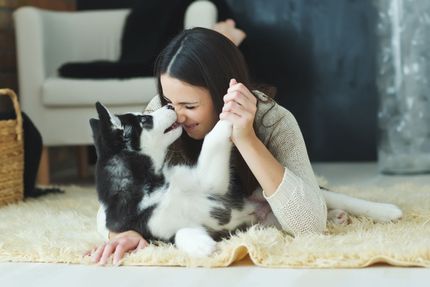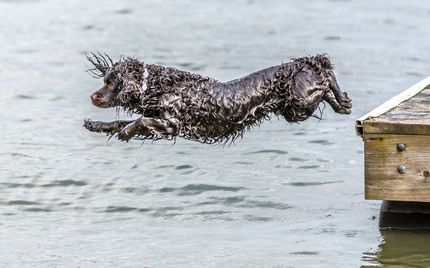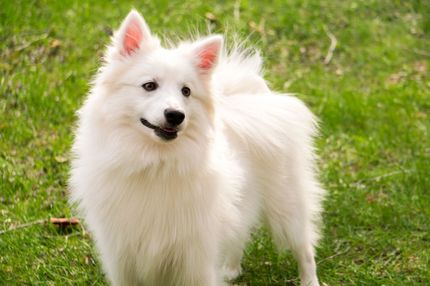Facts & Origin
Siberian Keeshond (Siberian Husky and Wolfsspitz mix)
The Siberian Keeshond is a mixed breed created by crossing a Siberian Husky and a Wolfsspitz (Keeshond). Siberian Huskies originated in the Siberian region of Russia and were bred as sled dogs by the Chukchi people who lived there. Wolfsspitzen, also known as Keeshonds, have their roots in the Netherlands and were used as guard and companion dogs.
Suitability and Husbandry
Siberian Keeshonds make excellent family dogs that get along well with children and other pets. They are active and need daily exercise to keep their bodies and minds healthy. Their thick coats require regular grooming to maintain a healthy and clean appearance. They fit well in a variety of living situations, provided they get enough exercise and mental stimulation.
| Alternate Name | - |
| Origin | USA - Germany |
| Life expectancy | 12 - 15 years |
| Care requirements | high-maintenance |
| Activity level | high - average to high |
| FCI group | not recognised |
| AKC group | not recognised |
| KC group | not recognised |
More Siberian Husky mixes
More Keeshond mixes
Attitude, character and temperament of the breed
Possible character traits
A combination of the energetic Siberian Husky and the alert Wolf Spitz, the Siberian Keeshond is an active, smart and loving dog. They are known to be very loyal and affectionate to their owners and are usually very sociable and good-natured. They are intelligent and adaptive, which makes training easier, although they can sometimes have a headstrong streak.
Overall, the Siberian Keeshond is a friendly, energetic and intelligent breed that can be a wonderful addition to any active family. With proper care, socialization and training, this handsome and loyal mixed breed will be a lifelong, loving companion.
Character
Usage
Care and health
Like all dog breeds, Siberian Keeshonds can be prone to certain health problems, including hip dysplasia, eye problems, and heart disease. A regular check-up with your veterinarian is important to detect and treat these conditions early. Their grooming needs include regular coat brushing, teeth brushing and nail trimming.
What does this mixed breed look like?
A Siberian Keeshond can inherit a variety of traits from both parents. Typically, they range in size from 45 to 60 centimeters and weigh between 16 and 27 kilograms. Their dense double coat fur can be medium length to long and colors range from black, gray, cream to a mixture of these. They often have the blue or different colored eyes of the husky and the pointed ears of the wolf-tip.
| Fur length | medium - long |
| Fur | flat coated |
| Ear shape | Standing Ears |
| Tail | fanned out - rolled up |
| Anatomy | - |
| Size ♀ | 43 - 56 cm |
| Weight ♀ | 14 - 23 kg |
| Size ♂ | 43 - 60 cm |
| Weight ♂ | 14 - 27 kg |
| Suitable For | - |
Known Diseases
Hip dysplasia (HD)
Hip dysplasia (HD) is a genetic condition in dogs where the hip joint is not shaped properly. This leads to pain, stiffness and restricted movement.
Eye diseases
Often occur with allergies and intolerances.
Skin inflammations
Can be hereditary in certain breeds.
FAQ
-
The Siberian Keeshond is a lively, sociable and affectionate dog that loves to play and seek attention and entertainment. He can be confident and alert.
-
The Siberian Keeshond is an intelligent dog that is docile and a quick learner. He can be very loyal and affectionate.
-
The average life expectancy is about 10 to 14 years.
-
Yes, he is usually very good as a family dog. He does well with children and other pets as long as he is properly trained and socialized.
-
The Siberian Keeshond needs daily training and mental stimulation to maintain his physical and mental fitness. He needs at least 30 minutes per day of training and activity, but it may be more to teach him good behavior and ward off nervous or aggressive tendencies.
